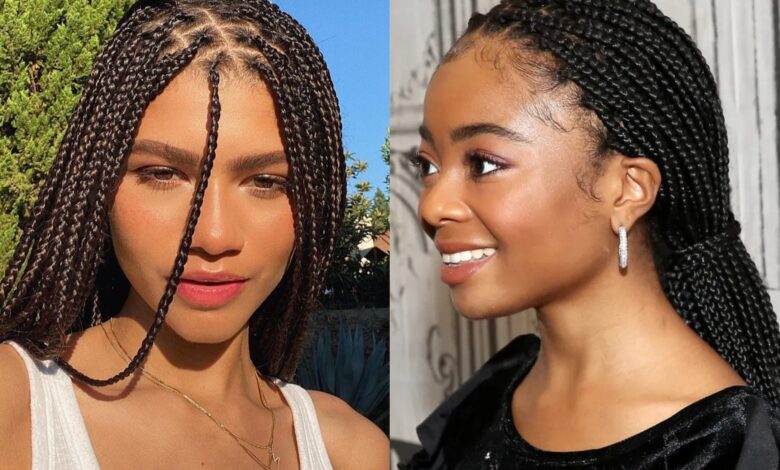58 Cute Box Braids You Have to Try in 2024

Protective styles are the powerhouse of natural hairstyles. Not only do they keep our natural hair protected, but they also encourage hair growth. Box braids are a particularly popular style. Unlike regular braids, they are named for the way the individual hair sections are parted for use: forming boxes on the scalp resembling a grid.
Box braids can be done at home, though the sheer volume of hair might make you more inclined to seek out a braiding stylist. While you’re there for your braiding appointment (which could take a while, as anyone who’s ever packed snacks for a braid appointment will tell you), ask your braider how to do box braids to get their tips on your preferred style.
Compared to loose natural hair, box braids are a very low-maintenance hairstyle. They’re not going to frizz out immediately after getting wet, making them perfect for vacation. Sleeping with a satin scarf or bonnet helps maintain shine and prevent breakage.
Over the last few years, some of our favorite celebrities have made box braids their go-to hairstyle for red carpets or social media appearances, with It girls like Coi Leray, Rihanna, Zoë Kravitz, and Zendaya all wearing the protective style.
What are box braids?
They’re most often installed with extensions and come in various lengths, sizes, and colors (as you’ll see ahead). When creating the style, synthetic hair is braided into box-shaped parts of hair, achieving a longer style that forms a protective barrier around our natural strands. “When natural hair is overmanipulated, it tends to cause breakage, so a protective style like box braids protects it from being harmed,” says Ursula Stephen, celebrity hairstylist and global ambassador for Suave, Tresemmé, and Dove.
If you’re thinking of getting the style yourself, there are a couple of things Stephen thinks you should know. First, you should treat and trim your hair prior. Natural hair is often blow-dried out beforehand to make the installation process easier for your stylist, so you can have your ends cut then.
Speaking of stylists, Stephen recommends that you research yours beforehand and be conscious of the sensitive parts of your scalp during the braiding process. “If you have a thin or weak hairline, then you shouldn’t put excess tension on those areas,” she warns. The style of box braids involves extensions pulling on hair, making it better suited for thicker, coilier, coarser curl type. To avoid hair damage, steer clear of this style if your hair is of a thinner texture, as the braiding hair might struggle to find a grip.
Who invented box braids?
Braids can be traced back 5,000 years in African culture to 3500 BC. Braiding began in Africa with the Himba people of Namibia. In some African tribes, braided hairstyles were considered a unique way to distinguish each tribe from the others. Box braids, specifically, stem from Egypt in 3100 BC but gained newfound popularity in the 1990s.
What helps box braids last longer?
Once you have your box braids in, it’s easy to forget about your actual from-the-root hair, which, yes, still requires moisturizing. There are plenty of curly hair products designed to soften the hair and reduce itching associated with keeping a style in for too long. “Products that have penetrating ingredients like coconut oil, jojoba oil, and olive oil are great to use while wearing these styles,” says Stephen. As for when to take them down, she recommends keeping them in for no more than two months.


